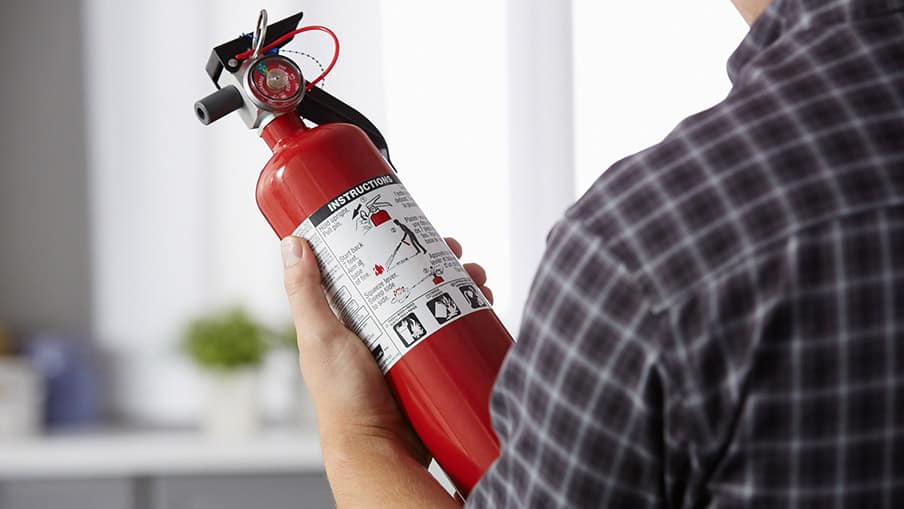Collect 25x Bonus CT Money®. That's 10% back in CT Money* on select MotoMaster tires. May 8-15 with Triangle Rewards®. Conditions apply.
Learn More.Triangle® Mastercard® $150 Bonus CT Money®††. New Cardmembers only. Conditions Apply. Ends May 31.
Learn MoreThis paragraph should be hidden..
How to keep your family safe
Proper installation and maintenance of smoke alarms, carbon monoxide alarms and fire extinguishers is the most important thing you can do to keep your family safe. Whether you own your home or rent, it’s important to take these matters into your own hands.


STEP 1
Install smoke alarms
Install smoke alarms on each level of your home, including the basement. On levels with bedrooms, it’s recommended to mount a smoke alarm outside of the rooms. If you sleep with the door closed, add one inside the bedroom, too, to make it easy to hear. Always follow the manufacturer’s directions when you’re installing them.
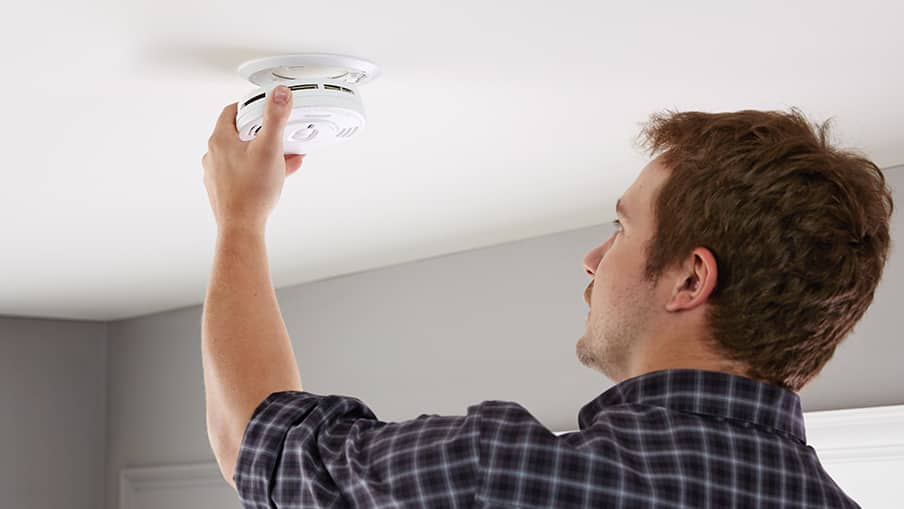
STEP 2
Change the batteries regularly
Make sure to change the batteries at least twice a year. A good rule of thumb is to change them during daylight savings time. You should also test them monthly.
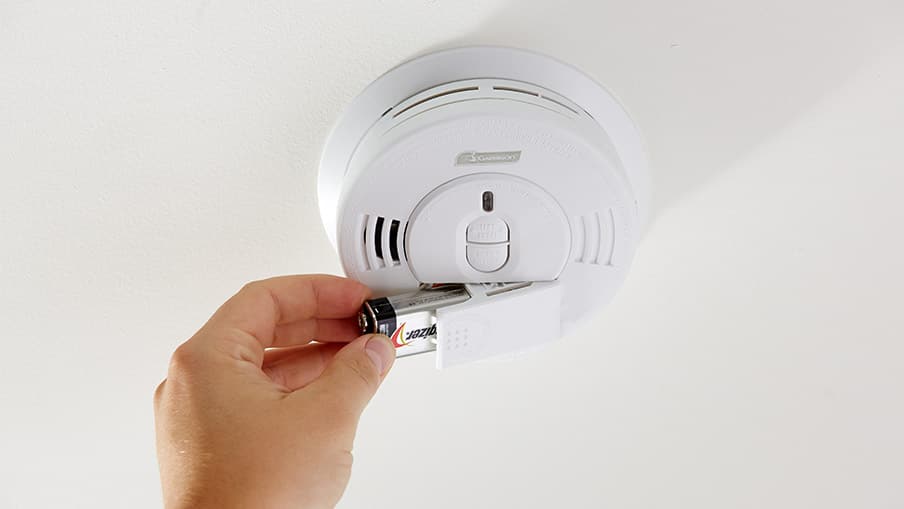
STEP 3
Important reminder
Remember to never take down an alarm or remove the batteries to silence a nuisance alarm caused by cooking or shower steam. Press the hush button to silence a nuisance alarm. Smoke alarms should be installed at least 3 metres from a cooking appliance to minimize false alarms when cooking.

STEP 4
Replace smoke alarms every 10 years
Whether your smoke alarms are battery operated or hardwired, they should be replaced with new ones if they’re 10 years old or older.
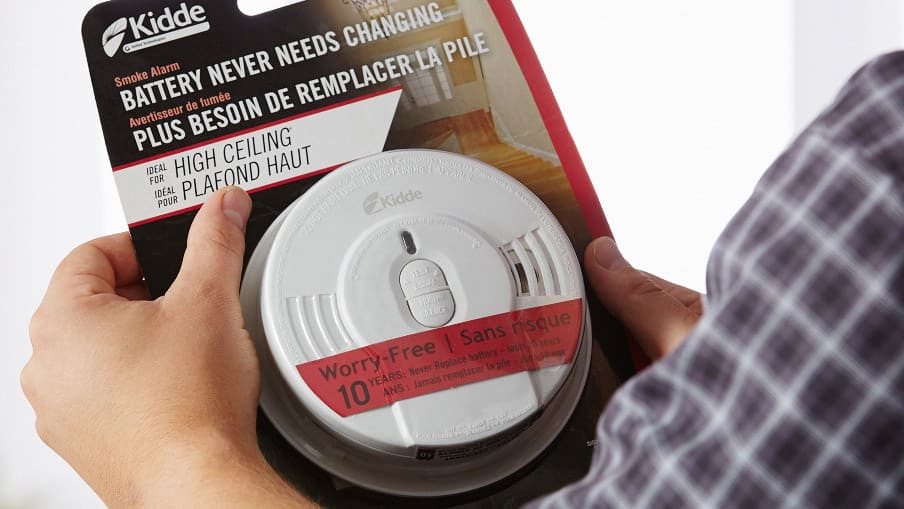
STEP 5
Install a carbon monoxide alarm
Carbon monoxide, also called CO, cannot be seen and has no smell or taste, but it can be deadly. CO comes from everyday sources, such as gas or propane furnaces, water heaters, dryers and stoves, as well as gas or wood fireplaces. Therefore it’s important to have at least one CO alarm in your home. The ideal location is in a hallway outside of bedrooms.

STEP 6
Important reminder
Choose a unit that is marked certified by the Canadian Standards Association or CSA 6.19-01. Follow the manufacturer’s directions for installation and test it regularly.
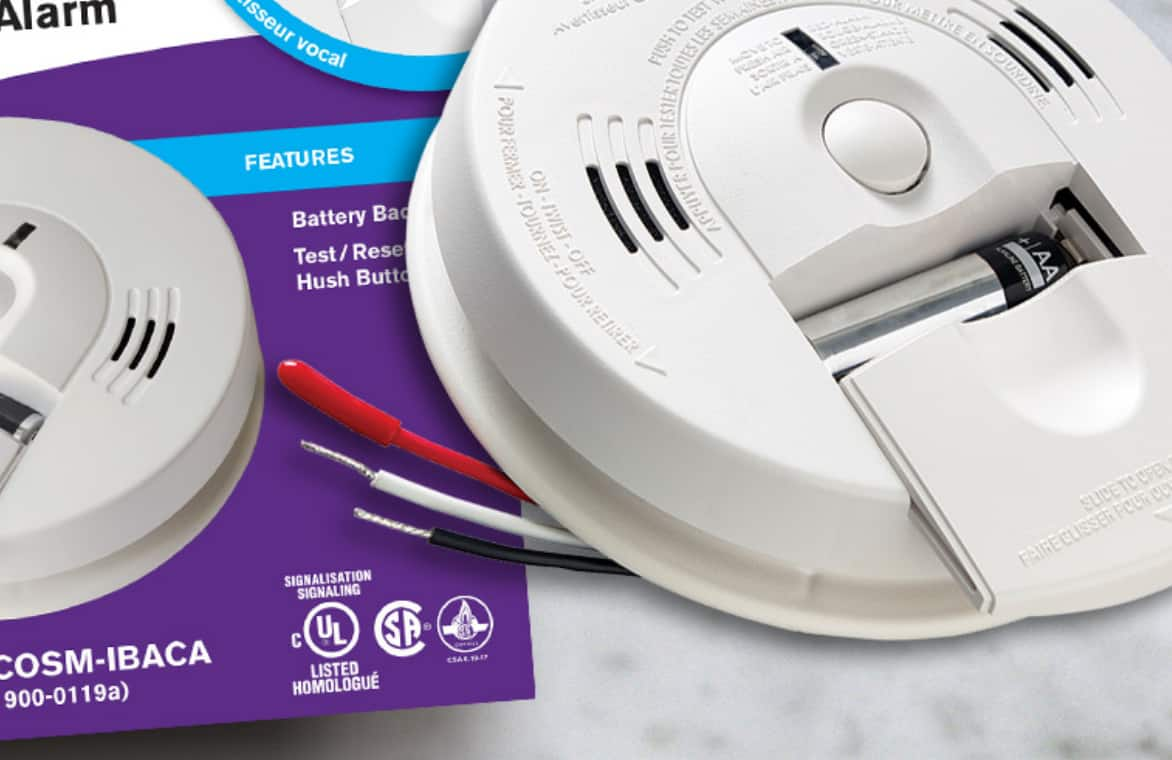
STEP 7
Test alarms monthly
Test smoke alarms at least once a month using the test button. Gently vacuum your smoke alarm monthly to prevent dirt from blocking the sensor.
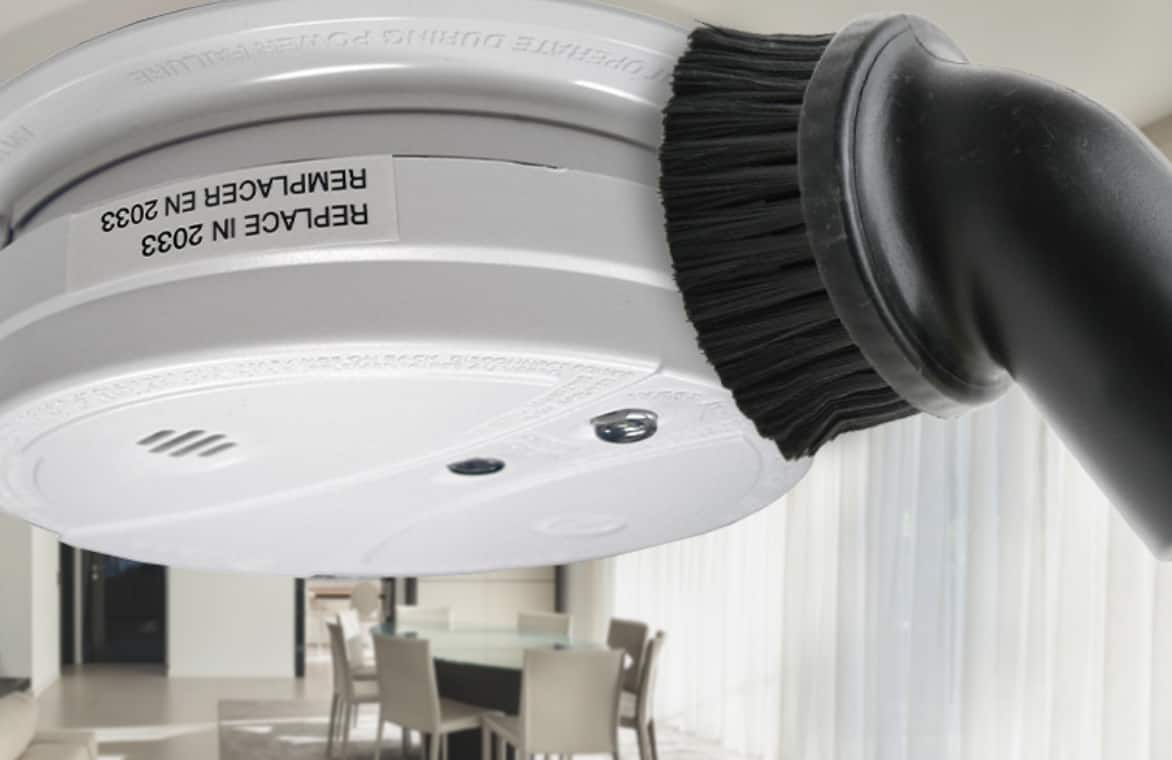
STEP 8
Have a fire extinguisher on hand
Make sure you have at least one fire extinguisher in your home. For maximum safety, it’s ideal to have three — one in the kitchen, one in the basement and one in the garage. Choose a model that you can comfortably pick up and use, remembering that these are only for small fires.
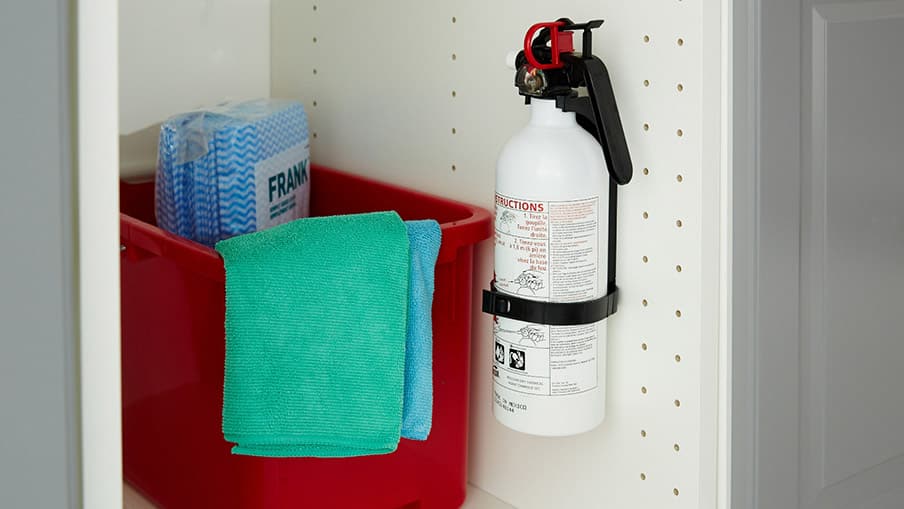
STEP 9
Familiarize yourself with your fire extinguisher
Make sure you’re knowledgeable about how to use the extinguisher before you’re faced with a fire. Install your fire extinguishers near an escape route, in an easily accessible area.
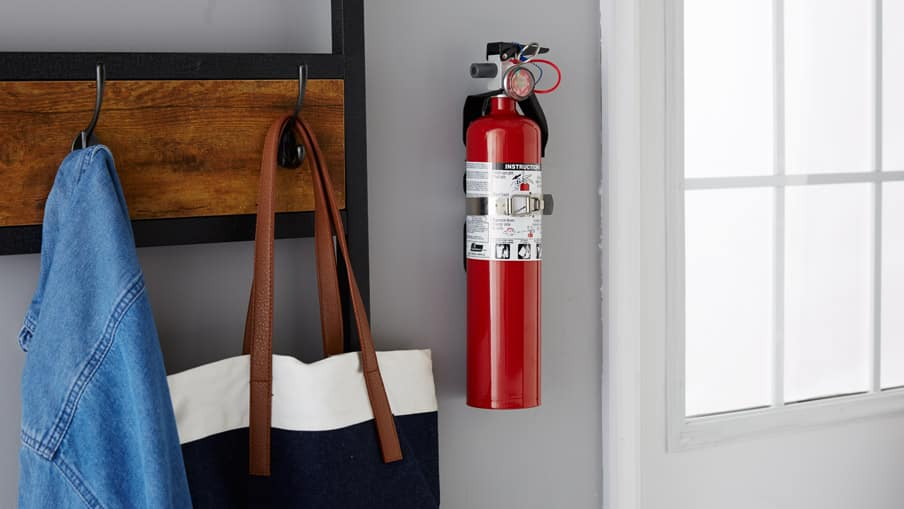
STEP 10
Inspect and service your fire extinguishers regularly
Inspect and service your extinguishers regularly, based on the manufacturer’s instructions.
